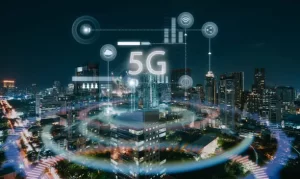Embracing Technological Advancements from 1G to 5G
Business Genesis in the 1980s
Let’s go back to the 1980s and explore, the owner of a small beverage company specializing in smoothies and juices. The business journey began with the purchase of a first-generation, bulky handset, popular during that era, for making voice calls using 1G technology. In those early days, 1G sufficed for the business needs. Over the next decade, dedication to quality products and exceptional service propelled the business to success.
Transition to 2G: A Turning Point for the Business
To enhance customer satisfaction and loyalty, efficient customer support was prioritized. Transitioning to 2G technology offered not only faster speeds but also text and multimedia messaging capabilities. This technological advancement marked a turning point, fueling the business’s growth over the next two decades.
Adapting to 3G: Meeting Expanding Needs and Audience
As the business expanded into various product categories like soft drinks, coffee, yogurts, and more, efforts were made to maintain high standards while keeping up with the evolving competition. The emergence of 3G technology allowed reaching new customers, promoting the brand and products effectively, and providing better customer support.

Embracing the Internet Age: Online Expansion
In the late 2000s, the internet’s rise made online business a necessity. Embracing this shift, diversifying online product offerings and initiating brand advertising became crucial. However, the data generated by the growing business necessitated a more advanced wireless technology enter 4G. This fourth-generation technology facilitated smoother transactions and efficient marketing, yet the potential beyond it remained untapped.
Discovering the Potential of 5G: Revolutionizing Business Operations
With the increasing digital presence, massive data accumulation, and a need for streamlined processes, exploring the potential of 5G became imperative. Learning about its capabilities offering significantly higher speeds, up to 20 gigabytes per second, and enabling transformative applications like AI-driven robotics highlighted the potential to revolutionize business operations.
5G Applications and Potential Across Diverse Sectors
5G offers various applications and potential across diverse sectors. It facilitates the connection of a greater number of IoT devices with reduced latency compared to 4G. The progress of 5G presents remarkable opportunities for remote care and surgery. Moreover, 5G has the potential to transform public safety and expand the gaming market. These represent just a few of the 5G applications across various sectors. Implementation of 5G is preventing companies from facing closure. Based on current reports, Samsung and Qualcomm have achieved a notable 5G download speed of 8.08 gigabytes per second. Apple and Xiaomi are actively releasing 5G-enabled phones. According to Statista, it is anticipated that 5G subscriptions will surpass 1 billion in 2023. This underscores the pivotal role 5G will play in the coming years.
So, I hope this article has been informative for you, and I’d like to thank you for viewing.
